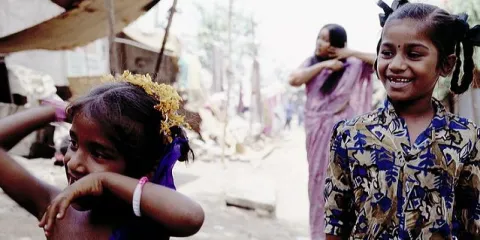In India, tobacco-related cancers represent 42% of male and 18% of female cancer deaths at ages 30-69 years

New research published in The Lancet analyses cancer death rates across India, and shows that oral, stomach, and lung cancers are important causes of death in Indian men, while cervical, stomach, and breast cancers cause the most cancer deaths among Indian women.
There were an estimated 556 400 cancer deaths across the whole of India in 2010. Some 71% (395 000) of these deaths occurred in people aged 30-69 years (200 100 men and 195 300 women). Cancer deaths accounted for 6% of deaths across all ages, but among the economically active 30-69 years age group this rose to 8% of the 2•5 million total male deaths and 12% of the 1•6 million total female deaths.
Tobacco-related cancers represented 42% (84 000) of male and 18% (35 700) of female cancer deaths at ages 30-69 years and there were twice as many deaths from oral cancers as lung cancers, in part due to common use of chewing tobacco in men and women. The authors, led by Professor Prabhat Jha (Prabhat Jha, Centre for Global Health Research, St. Michael’s Hospital and University of Toronto, ON, Canada) say: “The number of oral cancers was more than twice the number of lung cancers in individuals aged 30–69 years, indicating that the range of fatal cancers caused by tobacco in India differs substantially from that in high-income countries.”
Age-standardised cancer mortality rates per 100 000 were similar in rural areas (men 96, women 97) and urban areas (men 102, and women 91, but varied greatly between the states. Mortality rates were two times higher in the least educated than in the most educated adults: men, illiterate 107 vs most educated 46; and women, illiterate 107 vs most educated 43. Cervical cancer was around 40% less common in Muslim than in Hindu women, probably due to high circumcision rates among Muslim men having a protective effect against human papillomavirus (HPV) infection, a causative agent in cervical cancer.
In terms of geographical variation, the authors noted that a 30-year old man in northeastern India had the highest chance (11%) of dying from cancer before 70 years of age. By contrast, the risk was less than 3% for men in the adjacent states of Bihar, Jharkhand, and Odissa in eastern India. For women, the highest risk (6%) of dying from cancer before 70 years of age was in the northeastern states.
Rates of cancer deaths in India are about 40% lower in adult men and 30% lower in women than in men and women in the USA or UK. However, cancer death rates are expected to rise, particularly with increases in age-specific rates of tobacco smoking. The authors conclude: “Prevention of tobacco-related and cervical cancers and earlier detection of treatable cancers would reduce cancer deaths in India, particularly in the rural areas that are underserved by cancer services. The substantial variation in cancer rates in India suggests other risk factors or causative agents that remain to be discovered.”
In a comment piece published alongside the research, Dr Rengaswamy Sankaranarayanan, International Agency for Research on Cancer, Lyon, France, and Dr Rajaraman Swaminathan, Department of Biostatistics and Cancer Registry, Cancer Institute (WIA), Chennai, India say that the fact that 71% of cancer deaths occur in those aged 30-69 years emphasises the substantial social and economic gains that would be associated with a successful cancer prevention programme, adding: “Interventions such as tobacco control, vaccination against human papillomavirus and hepatitis B, cervical cancer screening, and early detection and treatment of oral and breast cancers would have a substantial effect on the prevention of cancer deaths.”
See also: http://uk.reuters.com/article/2012/03/28/us-india-cancer-idUKBRE82R06W20120328